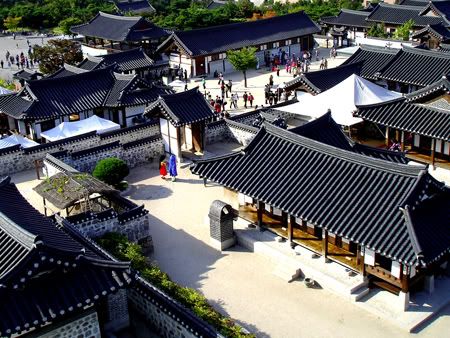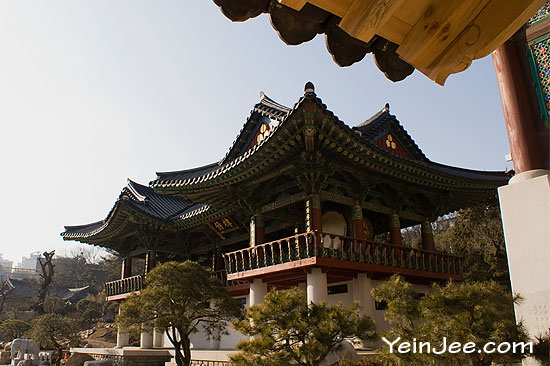With over 10 million people, a figure that doubles if you include neighboring cities and suburbs, Seoul is the largest city in South Korea and the unquestioned economic, political and cultural hub of the country. By some measures, it is the second largest urban agglomeration on the planet, after Greater Tokyo.

There is evidence for settlement in this area as far as 18 BC but Seoul as the capital city of South Korea has a history back to the 14th century. Seoul was the capital of Korea before its occupation by the Japanese and subsequent division following World War II . Since 1948, Seoul has been the capital of South Korea. Occupied twice during the Korean War by Communist forces, the city was extensively rebuilt and today is one of Asia's modern metropolises.
Seoul suffers from a partly unwarranted reputation for pollution and traffic jams. These days, strict emissions laws have brought the pollution under control and, while traffic jams do still snarl up Seoul's streets at rush hour , the extensive subway network means that the traveler can easily shortcut through it almost all of the time. With beautiful palaces, great food and a hopping nightlife, Seoul is a frenetic way to experience the Asia of old and new.
1. Gyeongbok-gung

The jewel of Seoul's five historic palaces, Gyeongbok-gung was built in 1395 by Lee Seong-Gye, founder of the Joseon Dynasty, who established the city as the capital of Korea. The magnificent rectangular palace, which now contains the National Folk Museum of Korea, features Royal apartments and staterooms, gardens and elegant lotus ponds. The pavilion features on the 10,000 won note. The palace is in a process of continual restoration as new archaeological treasures are uncovered and restored to their former glory.
2. Namsangol Hanok Village

Set among the skyscrapers, the Namsangol traditional Korean village comes as a pleasant surprise. Centred on five restored Korean historical homes depicting various social levels from the Joseon Dynasty, the village is a time capsule in the midst of the city with its peaceful pond and pavilion. Visitors can not only explore the houses, but also enjoy traditional tea, shop for souvenirs, browse traditional crafts, or try their hand at ancient games like 'neolttwigi' (jumping on a see-saw) or arrow throwing. At weekends in summer traditional wedding ceremonies are held at midday.
3. Lotte World

Fun and thrills are the order of the day at Seoul's main theme park, which draws about six million visitors annually. According to the Guinness Book of World Records, Lotte is the largest indoor theme park in the world. The park is divided into an indoor and outdoor section. Inside, 'Adventure Land' covers acres of streets representing different countries, filled with hundreds of activities, entertainments, shops, restaurants and ongoing parades. Outdoor, Magic Island with its fairy-tale castle, offers thrilling high-altitude rides, laser shows and pleasant walking trails around a lake. There is also an indoor ice-rink and a fascinating Folk Museum complete with miniature villages.
4. Insadong

No visit to Seoul is complete without exploring the capital's heart and artistic soul: the alleyways of the Insadong district, known colloquially as 'Mary's Alley'. More than 100 antique shops and countless art galleries are tucked away here, delighting collectors and casual browsers alike. From ancient Chinese pottery to yellowed books and delicate jewellery, most visitors manage to find a treasured souvenir or special gift among the quaint stores. There are plenty of restaurants, taverns and traditional teahouses in the area, too, to ensure shoppers stay refreshed.
5. Namsan Park

Namsan, the mountain that stands sentinel in the centre of Seoul, is a popular recreational feature in the city. A cable car, and stairway, takes visitors to the summit, where there are several attractions to enjoy, including the Maritime Aquarium, botanical gardens, fountains and the Seoul Tower, which, rising 1,575ft (480m), offers a fantastic view of the city and surrounds. The revolving restaurant on top of the tower is particularly popular for dinner because of the breathtaking view it affords of Seoul by night.
6. Myeong-dong

Paradise for shoppers, Myeong-dong is Seoul's retail haven covering a vast area that spreads out from the Myeong-dong subway station. Massive department stores, boutiques, restaurants, fast-food outlets and malls are crammed into this buzzing district. Brand name clothing and accessories can be had at good prices at venues like the Lotte or Shinsegae Department stores, and malls like U-too Zone, or seek out bargains at outlet stores like Migliore and Avatar. If you need to rest your feet and your credit card take a look at the famed Gothic style Myeong-dong Catholic Church, where you'll find a peaceful garden.
7. Bongeunsa

Bongeunsa is a Buddhist temple in Gangnam-gu and was founded in 794 AD by Yeon-hoe, the highest-ranking monk of Silla at the time. The temple was reconstructed in 1498 and became the main temple of the Korean Seon (Zen) sect of Buddhism. Today Bongeunsa is a flourishing complex offering a 'Temple Stay Program' where visitors can live as monks do for a few hours.
8. Changdeok-gung

One of the 'Five Grand Palaces' built by the kings of the Joseon Dynasty, Changdeokgung is set within a large park in Jongno-gu and the whole complex has been included on the UNESCO World Heritage list. Located east of Gyeongbok, Changdeokgung is also referred to as the East Palace. It was the favoured palace of many kings of the Joseon Dynasty and in accordance with the Three Kingdoms of Korea period, its buildings blend harmoniously with the natural landscape.
9. Olympic Park and Stadium

The Seoul Olympic Park, or Olpark, was built to host the 1988 Summer Games, located in Songpa-gu, Bangi-dong. It is home to Jamsil Olympic Stadium, the main stadium built for the summer games. The arena occasionally hosts shows, such as the Michael Jackson concert, and other attractions include the Seoul Olympic Museum, Mongchon Fortress and the World Peace Gate.
10. Jogyesa

Jogyesa is the chief temple of the Jogye Order of Korean Buddhism. First established in 1395, Jogyesa is located in Gyeonji-dong, Jongno-gu, in central Seoul. In 1998, Jogyesa made international news when several monks occupied the temple for over 40 days in a power struggle between factions of the Jogye Order. A highlight of this attraction is the Natural Monument 9, an ancient white pine tree, within its grounds.
11. Jongmyo Shrine

Jongmyo Shrine is a UNESCO World Heritage Site and is heralded as Korea's foremost cultural treasure. Visitors to Seoul will be hard-pressed not to visit the Jongmyo Shrine. Built in 1394, the shrine is the oldest royal Confucian shrine in the world and ceremonies, rituals and traditional dance performances are often held at the shrine. Jongmyo is the official shrine of the Korea's Joseon Dynasty. Tourists visiting Seoul will find the shrine situated within walking distance of the Changdoekgang Palace complex. Jongmyo is made up of a number of halls as well as a small cloister, the interior of the shrine as well as the roofs and ceilings are exquisitely painted and decorated. The Jongmyo Shrine is also home to over 40 memorial tablets of past kings and queens of Korea.
- wordtravels -
- wordtravels -










.jpg)
0 comments:
Post a Comment